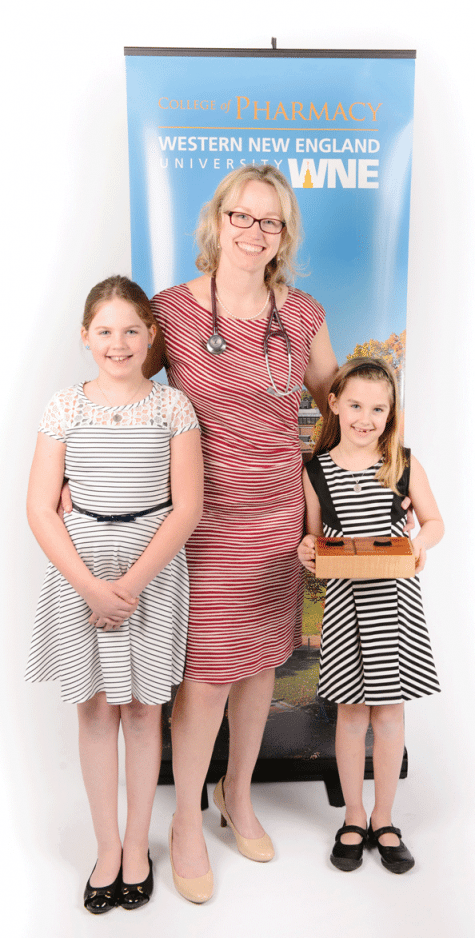Courtney Doyle-Campbell
Clinical Assistant Professor, Western New England University; Age 38

Courtney Doyle-Campbell
During her undergraduate studies at Smith College, Courtney Doyle-Campbell considered whether to become a doctor or a researcher. She eventually chose a career that bridged both worlds: the rapidly changing field of pharmacy.
After earning her PharmD degree at UConn, she took a retail job with Walgreens as a community pharmacist, but then an intriguing opportunity arose: an adjunct teaching position at Western New England University, in its just-launched College of Pharmacy. So she made a career shift into education.
“I learned that I love teaching,” she said. “I had been resisting it. I come from a long line of educators, and I saw how hard teachers work and how burned out they get.”
That wasn’t her experience at WNEU, however. Not only did Doyle-Campbell enjoy interacting with students, she also forged a partnership with RiverBend Medical Group to develop a program for patients with treatment-resistant hypertension, splitting her time between that clinic and the college.
“Physicians send me patients who have trouble getting their blood pressure under control, or patients who are confused about their medications and need more education, or they’re taking three or four things, and their blood pressure is still high,” she explained. “I enjoy chronic disease management and talking with patients. It’s really one of my passions. So it’s a perfect fit for me along with my job at Western New England.”
That program is one way she has taken to heart the college’s philosophy of ‘the pharmacist as educator,’ and she’s excited to be in the field at a time when the pharmacist’s role is expanding and becoming a more critical bridge between the patient and primary care.
“It’s continuing to evolve, and you can do anything in this field — research, teaching, patient education, or a mix of those things,” said Doyle-Campbell, who also advises the local student chapter of the American Pharmacists Assoc., and is active in efforts to get the government to recognize pharmacists with provider status on par with physicians and other healthcare professionals — all while making time for her daughters, Maura and Elyse.
“There’s a disconnect between what we do and what people perceive that pharmacists do. We’re trying to bridge that gap and get more recognition,” she added. “It’s different than when pharmacists graduated 20 years ago. Then, the emphasis was all on the drugs. Now, the emphasis is really on the patient. It’s amazing how far pharmacy has come in such a short time.”
—Joseph Bednar
Photography by Leah Martin Photography





